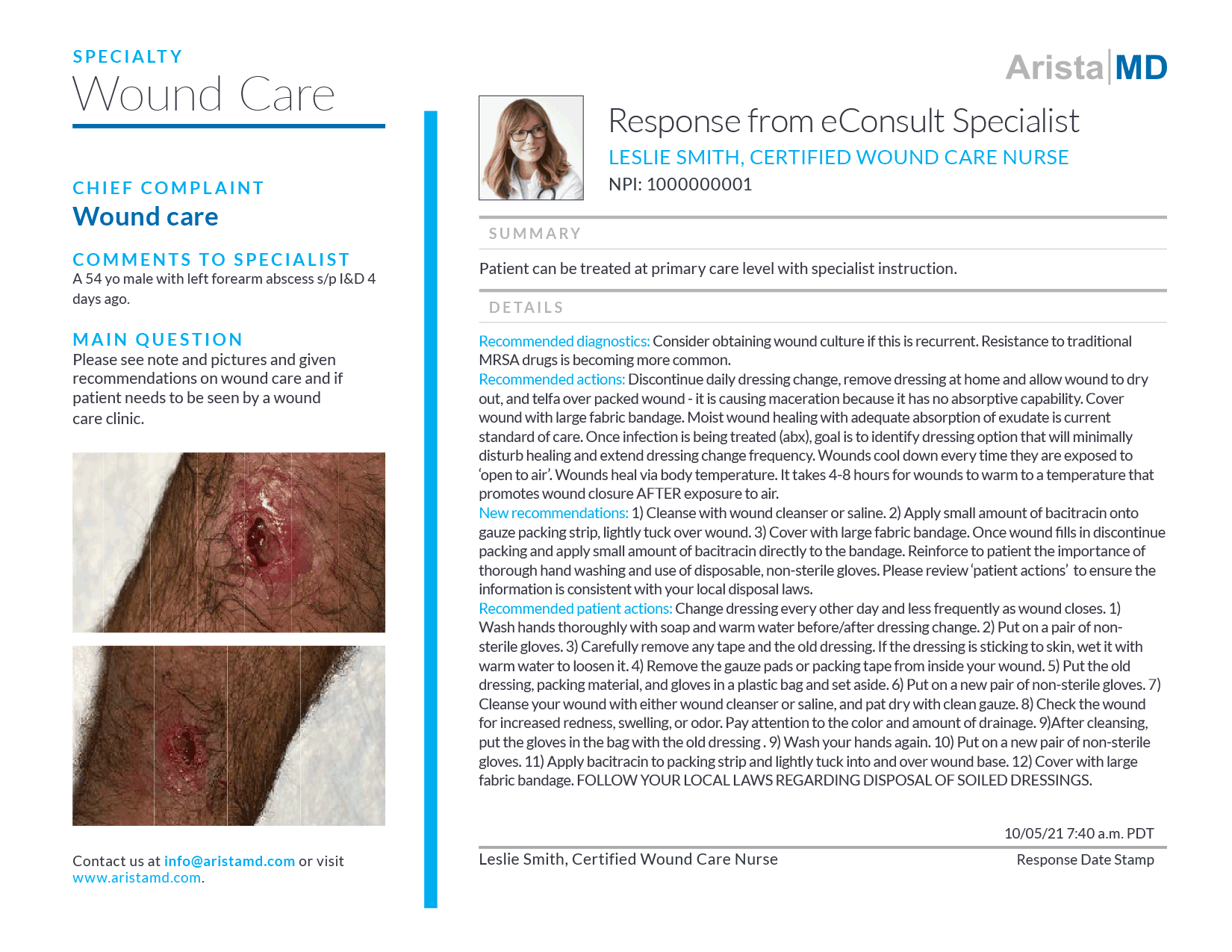What’s the Value of Physician eConsultation?
Physician eConsultation allows primary care providers and their patients to receive expert advice on wound care treatment and a variety of other specialties. These telehealth benefits include reducing patient referral wait time, increasing the likelihood that the patient will receive care and lowering the usage of emergency services.
Physician eConsultation Provides Benefits to the Practice and the Patient
There’s real value in engaging in a specialist physician eConsultation. The primary care provider gains access to very focal experience. The provider receives good site of care alternatives, and the patient can be seen in any setting. Physician eConsultation is performed in long-term care facilities, home care, urgent care clinics, and doctor’s offices. This form of telehealth is called store-and-forward.
eConsults with a specialist also prevents your patient from leaving your practice because they are seeing a specialist in another location or were forced to visit the emergency department. When a primary care providers uses a specialist physician eConsultation, the PCP can keep the patient in the health system, which is extremely important.
The patients also see a variety of benefits from physician-to-physician consultation, including access to specialist care in rural communities that may not have a wound care clinic. Even in metropolitan areas, patients are often limited by their own ability to travel to a wound care clinic. Myra Varnado at Corstrata provided care to five patients in New York during a single month.
Request a Demonstration
Sample eConsult: Wound Care

How Physician eConsultation Fits into the Future of Healthcare Delivery
We have turned a page to the next chapter in healthcare for the US. At its core is a new healthcare delivery system in which we leverage all available tools to allocate our precious resources, and the patient is at the center of it all.
We have a severe shortage of providers in the U.S. and must utilize the right tools at the right time to match patients to the right resources in the right place. In addition, healthcare needs to be more consumer-centric, as we are witnessing a rising demand of patients seeking options like telehealth that deliver high-quality care faster, more conveniently, and affordably.
Lastly, as we adapt our care delivery models in the future, we need to keep an eye on reducing the stark inequities that have become glaringly apparent during this pandemic. Modalities like telehealth hold the promise to provide culturally and linguistically appropriate access to care through expanded networks and to help close gaps in care and address social determinants of health.
Telehealth solutions can be used to optimize the efficiency of healthcare delivery and ultimately improve the patient experience. One mode of telehealth, eConsults, ensures that patients are treated by the right provider in the right setting by facilitating effective peer collaboration that can support all providers to operate at the top of their license. What that means in practice is that primary care providers can get guidance from specialists to help design care plans and that in-person visits to specialists can be reserved for those patients with more complex issues who cannot be treated virtually.
eConsults can be used effectively for any routine clinical issue, from questions about treating a rash or lesion to advice on addressing wounds to getting medication adjustment recommendations for any number of conditions. In addition, electronic physician consults effectively support remote care of patients with chronic conditions who would normally rely on in-person check-up visits.

